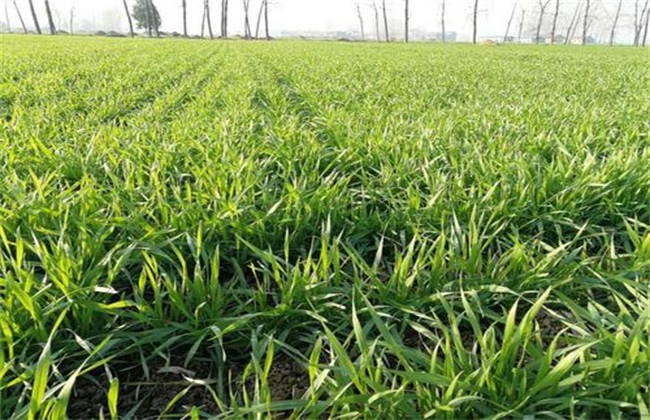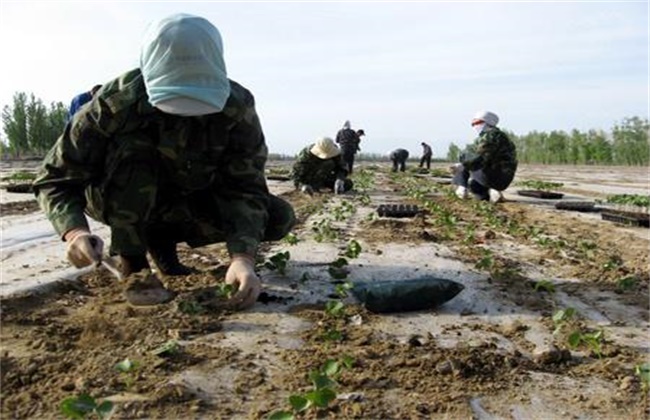Key points of management of wheat returning to green period
Wheat is a very important food crop in China, which is basically planted in all parts of our country. When planting wheat, we should adjust our management according to the growth stage of wheat. So with the gradual rise in temperature now, how to manage the wheat after entering the green stage? Today, the editor has brought you the focus of the management of wheat returning to green. Let's take a look at it.

1. Cut and hoe to loosen the soil
When the wheat is turning green, the first thing we should do well is to dig and loosen the soil. This is the key measure to ensure that wheat seedlings can turn green as soon as possible and promote healthy growth. Because loosening soil can improve soil permeability and increase soil temperature, which is very beneficial to the growth and development of root system. Moreover, hoeing can cut off the capillaries in the soil, avoid the upward movement of soil moisture in the lower layer, and play the role of preserving water and moisture. At the same time, it is also very beneficial to the activity of microorganisms in the soil. Generally at the beginning of the green period, and then at the end of the jointing stage, a total of about 3 hoes should be drawn, first shallow and then deep. If Miaoduo is easy to lodge, then ploughing deeply once.
2. Topdressing due to seedlings
During the period of returning to youth, topdressing is naturally indispensable. And when we apply re-green fertilizer, we should pay attention to topdressing because of seedlings. For example, if the growth of wheat seedlings before winter is weak, the soil fertility is poor, and early sowing leads to de-fertilization. Then it is necessary to early return to the green fertilizer application time and amount. Generally speaking, topdressing should be started when the surface begins to thaw, mainly ammonium bicarbonate. If you are deficient in phosphorus, mix the right amount of calcium superphosphate. Returning to green fertilizer is the main measure to turn wheat seedlings from weak to strong, and it is also the key to increase the number of ears per mu. However, if the seedlings are numerous and prosperous, there is no need to apply re-green fertilizer.
3. Uncover the ridges
When planting in winter, if there is a cover, then after the wheat green period, we should pay attention to timely uncover the ridges, so as to increase the ground temperature and ensure root growth. However, in order to avoid the cold in late spring, we have to do it twice when clearing ridges. The first time was seven days after the rejuvenation period, and then a second time two weeks later. Remove all the soil, but prevent the tillers from being exposed. For low-lying land with high moisture requirements, it must be done before the wheat is re-starched. However, if the wheat field is relatively dry, it can be appropriately delayed to prevent frost damage.
4. Pour back the green water
The pouring of green water is also very important. We should adjust reasonably according to the soil water content and the growth of wheat seedlings. If the soil is dry when it is not watered before winter or if it is watered too early before winter, the soil can be watered back to green water as soon as possible. However, it is necessary to control the amount of watering, because at this time the soil has not been completely thawed, and if the soil is watered too much, it will easily lead to stagnant water and prevent the new roots from growing. The phenomenon of young and old seedlings appears, which leads to the death of seedlings in serious cases. On the contrary, if the overwintering water is suitable, the pouring time of turning green water can be delayed appropriately. Under normal circumstances, the turning green water in the south is poured in mid-early March, while in the north, it is in late March.
The above is a brief introduction to the key points of wheat management during the green period. That's all for today's introduction. This article is for reference only. I hope it can help you all.
Related
- The first cup of black tea in spring, the flavor and history of tea gardens in Kenya, Africa
- The computer can not only choose potatoes, but also grow tea rice. AI will grow winter oolong tea champion.
- It is not only the inflated tea bitten by insects, but also engraved with the four seasons tea in Beipu.
- The Oriental Beauty Tea Festival in Zhuxian County takes the stage at the weekend to experience the plus-size feast of oil tea.
- & quot; Oriental Beauty Tea & Exploration of Emei in Hsinchu, the hometown of quot;
- The new variety of strawberry "Tainong 1" dessert is the first choice with mellow aroma. Crimson gorgeous
- History of Tea in Taiwan: from Wild Inner Mountain to Export Tea Garden
- Two types of Taiwan Oriental Beauty Black Tea won the British three-Star Award for Childhood Tea Xiang Zhang Jiaqi changed from pilot to champion tea maker.
- Banana species and varieties: the planting history of Taiwan Xianren banana and dwarf banana is long, is banana disease resistant?
- Coffee planting Technology: Qianjie Coffee from Seedling to harvesting



